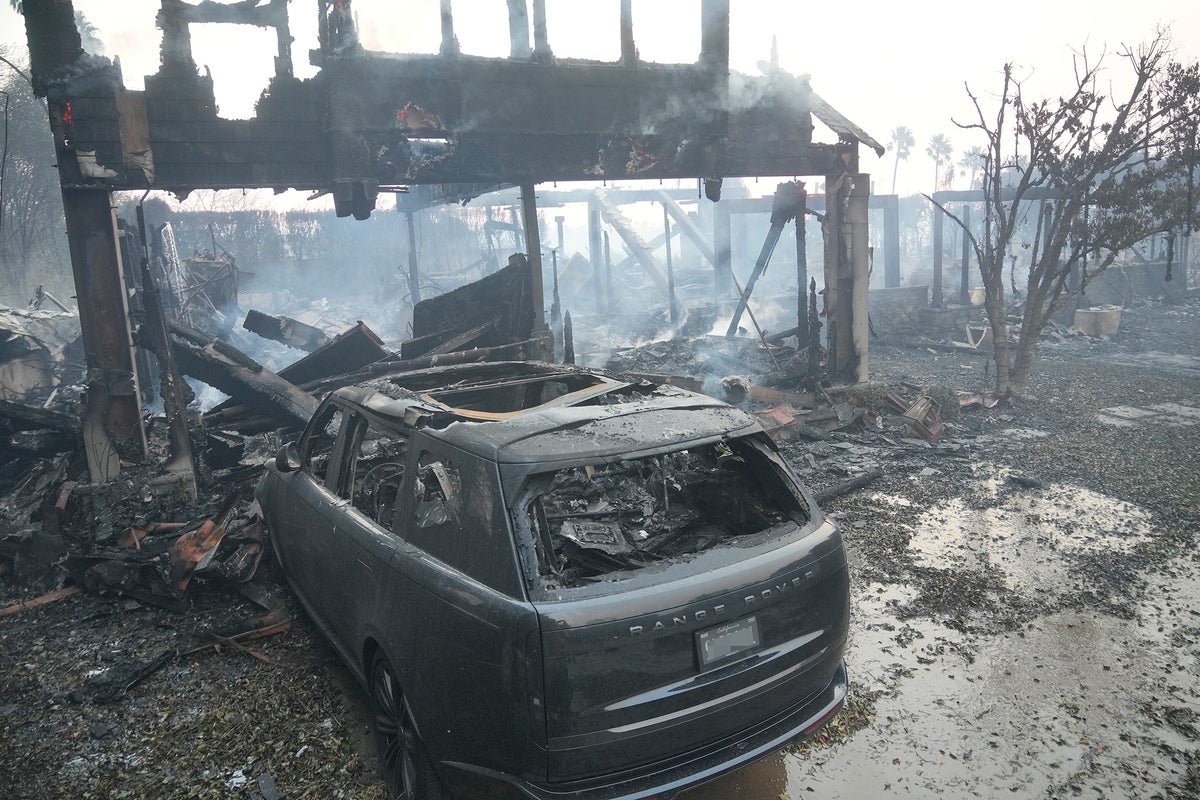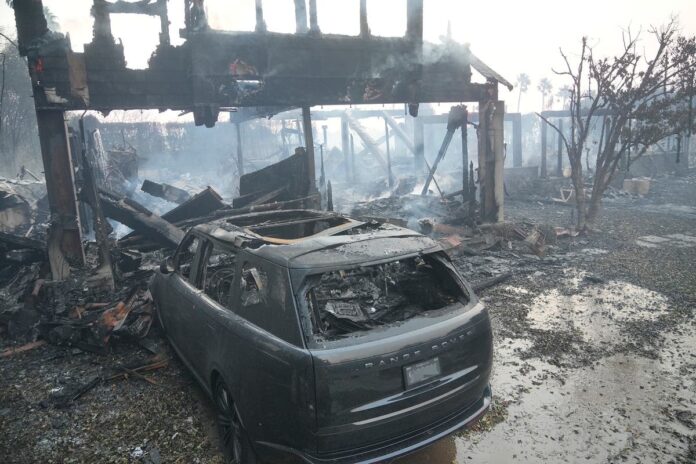## Paradise Lost? California’s Home Insurance Crisis Just Got More Real
The Pacific Palisades fire, a blazing inferno that tore through a picturesque LA neighborhood, is a stark reminder of the growing threat of wildfires in California. But beyond the immediate devastation, it’s a harbinger of a deeper crisis: California’s home insurance market is on the brink.
Skyrocketing premiums, dwindling coverage, and entire neighborhoods deemed uninsurable are pushing Californians to the edge. This isn’t just a problem for coastal communities anymore. The flames are spreading, and so is the fear. In this article, we’ll explore how the Pacific Palisades fire is fueling an already raging crisis, and what it means for the future of homeownership in the Golden State.
The Uninsurable Dream: A Look at California’s Home Insurance Crisis

California’s idyllic landscapes are under siege, not by invaders, but by an increasingly volatile natural threat: wildfires. While the beauty of the Golden State draws residents in, the state’s susceptibility to these devastating blazes has spawned a parallel crisis: a home insurance nightmare. Homeowners, particularly in fire-prone regions, are finding themselves increasingly priced out or left entirely unprotected by the dwindling ranks of insurers willing to cover the mounting risks.
The exodus of major insurance companies, including giants like State Farm, AIG, and Allstate, has left a gaping hole in the Californian insurance market. These companies, citing escalating wildfire risks and the astronomical costs associated with claims, have pulled out of the state, leaving millions of homeowners vulnerable.
The High Cost of Risk
For those who remain insured, the cost of protection has skyrocketed. Premiums have surged dramatically, often becoming unaffordable for many. Moreover, coverage limits are shrinking, leaving homeowners with insufficient funds to rebuild in the event of a loss. This financial strain is particularly acute in high-risk areas, where the threat of wildfire is ever-present.
The Insurer of Last Resort
Stepping into the breach is the California FAIR Plan (Fair Access to Insurance Requirements), a state-backed program that acts as an insurer of last resort. While the FAIR Plan provides a safety net, its policies are notoriously expensive and restrictive. With limited coverage options and high premiums, the FAIR Plan is a far cry from the comprehensive protection offered by private insurers.
Palisades in Flames: A Catastrophe with Billions in Losses
The recent Palisades Fire, raging through the Los Angeles area for days, has served as a stark reminder of California’s vulnerability to wildfires. This devastating blaze, fueled by dry conditions and strong winds, has left a trail of destruction, scorching hundreds of acres and displacing thousands of residents.
The Devastating Impact
The economic impact of the Palisades Fire is staggering. According to a report issued by JP Morgan, insured losses are estimated to reach $10 billion. This figure represents the cost of rebuilding homes, businesses, and infrastructure destroyed by the flames. The human cost, however, is immeasurable. Families have lost their homes, businesses, and cherished memories. The emotional toll on the community is profound.
Celebrity Homes Lost
The Palisades Fire has not spared even the wealthy enclaves of Los Angeles. Prominent figures, including actress Jamie Lee Curtis, comedian Billy Crystal, and actor James Woods, have reported losing their homes to the blaze. The images of their once-luxurious homes reduced to ashes have captured the attention of the nation, highlighting the indiscriminate nature of this devastating disaster.
A Costly Community
The impact of the Palisades Fire extends far beyond the immediate physical damage. The fire has strained resources, disrupted businesses, and left a community reeling. The long-term economic consequences will be felt for years to come. The burden of rebuilding will fall on the shoulders of homeowners, businesses, and the state.
Beyond the Smoke: Systemic Issues Fueling California’s Wildfire Crisis

While the immediate impact of the Palisades Fire is devastating, it is crucial to understand the systemic issues that have contributed to California’s growing wildfire crisis. Addressing these root causes is essential to mitigate future risks and protect communities.
Building in Danger Zones
One significant factor is the increasing development of homes in areas with high wildfire risk. The allure of panoramic views and proximity to nature has led to a proliferation of housing in vulnerable locations. This encroachment on fire-prone areas has increased the risk of wildfires igniting and spreading, putting more lives and property at risk.
Climate Change
Climate change is another contributing factor. Rising temperatures, prolonged droughts, and increased lightning strikes create an environment ripe for wildfires. The frequency and intensity of wildfires have surged in recent years, underscoring the urgent need to address climate change.
The Human Factor
While natural factors play a role, human activity is also a significant contributor to wildfires. Carelessness, negligence, and illegal activities like arson can ignite fires that quickly spread out of control. Public education and stricter enforcement of fire safety regulations are essential to minimize human-caused fires.
Finding Solutions: What Can Be Done to Mitigate This Crisis?
California’s wildfire crisis demands a multi-pronged approach. Addressing the root causes and implementing effective mitigation strategies are crucial to protecting lives, property, and the environment.
Building Codes and Fire Safety
Strengthening building codes and promoting the use of fire-resistant materials can significantly reduce the risk of homes catching fire and spreading flames. Implementing stricter regulations on construction in high-risk areas can limit future development in vulnerable zones.
Community Preparedness
Empowering communities to prepare for wildfires is essential. Public education campaigns should raise awareness about wildfire risks, preventive measures, and evacuation procedures. Creating community wildfire protection plans and encouraging residents to create defensible spaces around their homes can help mitigate the impact of wildfires.
Investing in Prevention
Investing in wildfire prevention and mitigation strategies is paramount. This includes clearing brush and creating fuel breaks to slow the spread of fires, improving forest management practices, and investing in early warning systems and firefighting resources.
Conclusion
The flames of the Pacific Palisades fire are a stark reminder of the escalating threat California faces from wildfires, and a tragic testament to the mounting home-insurance crisis gripping the state. As we’ve explored, soaring costs, dwindling coverage, and the increasing risk of non-renewal are pushing homeowners to the brink, leaving them vulnerable and financially exposed. This isn’t just a matter of rising premiums; it’s a systemic failure that threatens the very fabric of California communities.
The implications are far-reaching. If homeowners can’t afford insurance, property values plummet, communities become less resilient, and the dream of homeownership becomes a distant reality for many. This crisis demands immediate action. We need innovative solutions, strengthened regulations, and a renewed commitment to wildfire mitigation. The Pacific Palisades fire is a wake-up call, a stark reminder that the time for complacency is over.
Ignoring this crisis is not an option. Our collective future depends on finding a way to protect our homes, our communities, and the very heart of the California dream. The question is, will we rise to the challenge before it consumes us?

